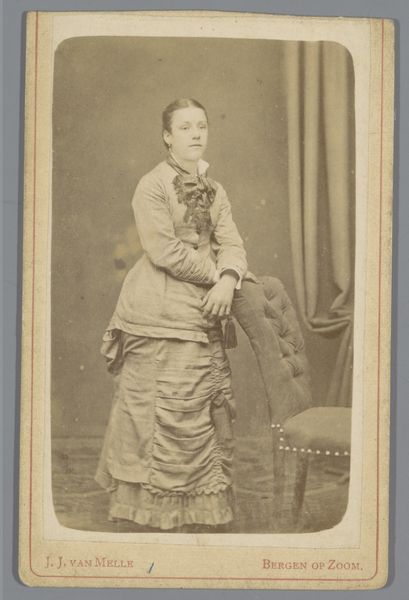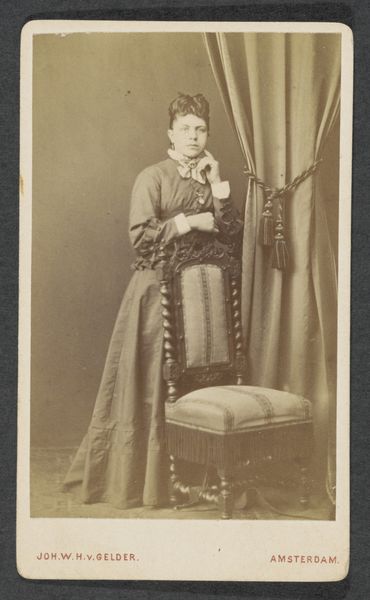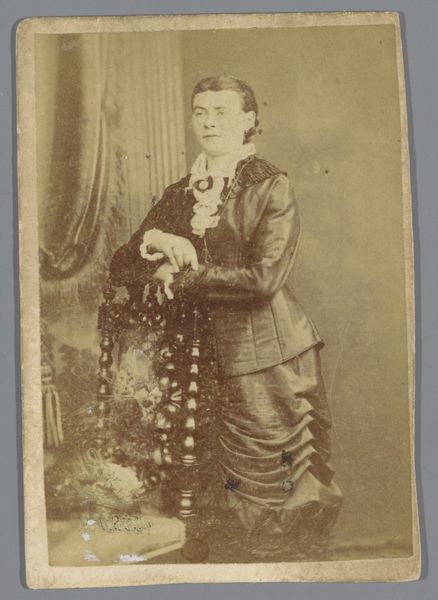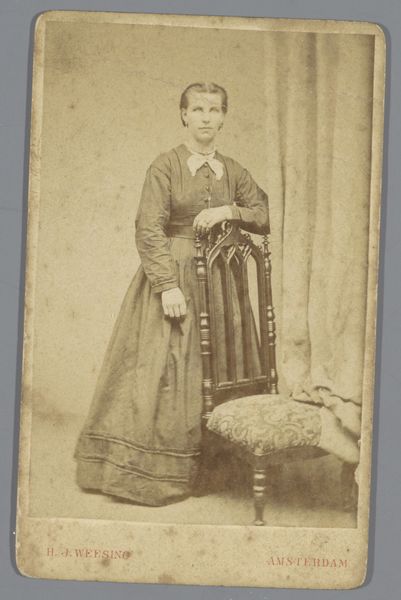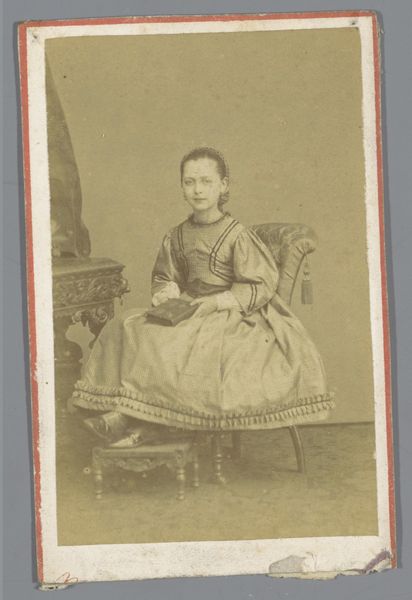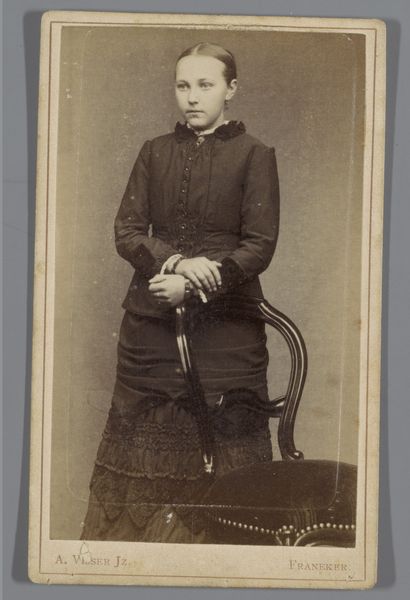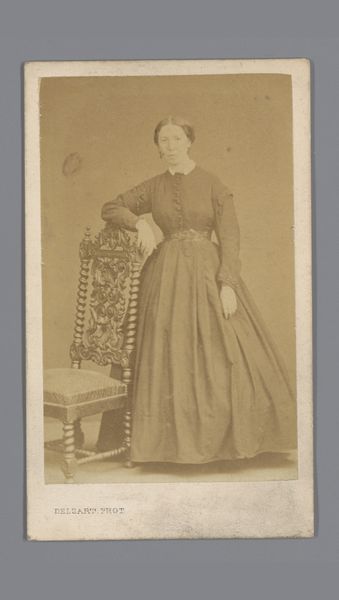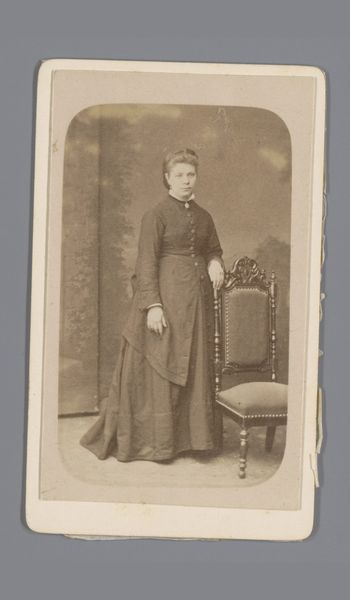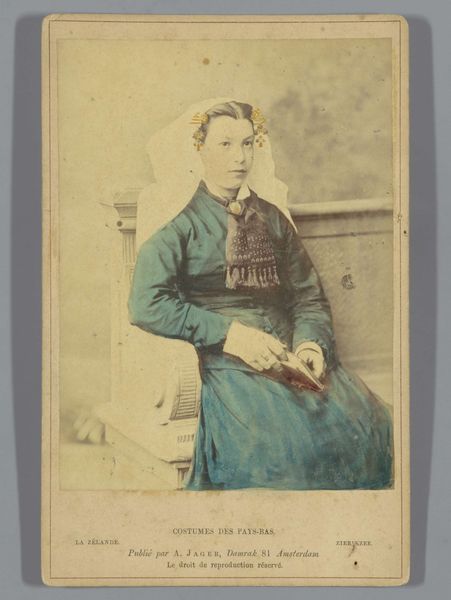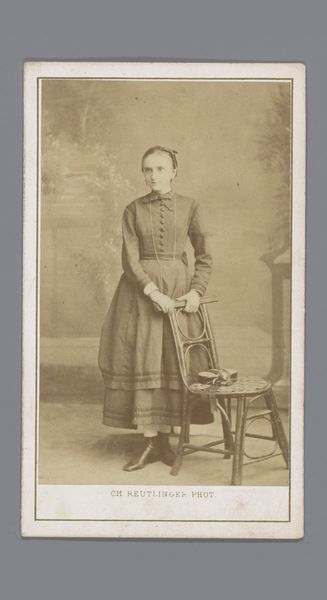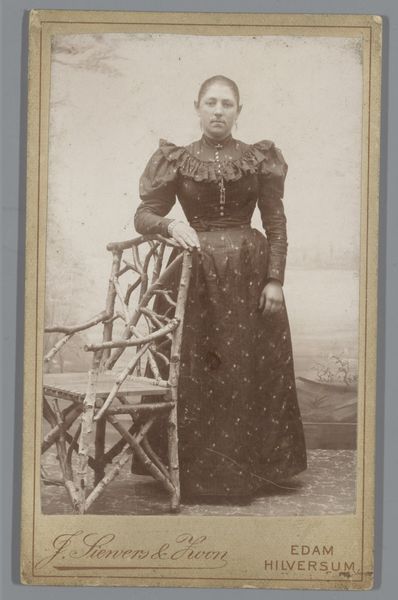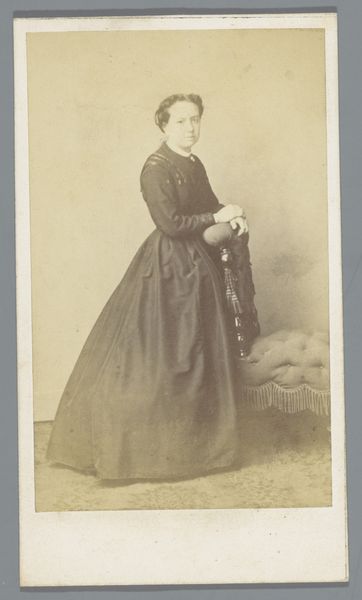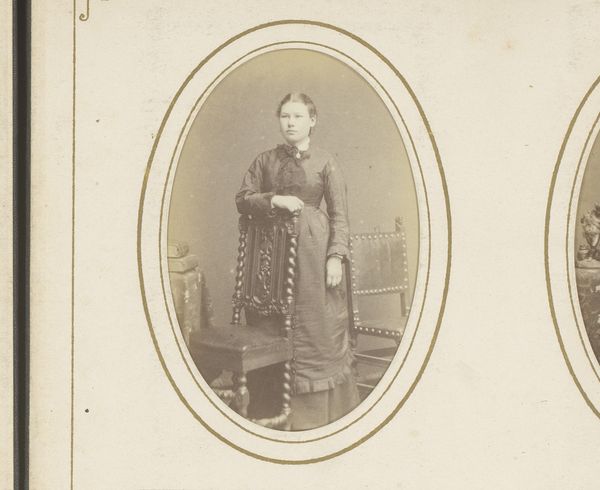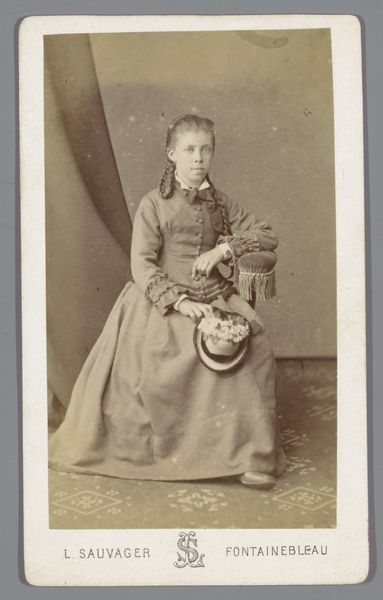
Dimensions: height 105 mm, width 63 mm
Copyright: Rijks Museum: Open Domain
Curator: Here we have a gelatin silver print from 1878, titled “Portret van een onbekende vrouw bij fauteuil,” which translates to "Portrait of an Unknown Woman by Armchair." It's by Charles Binger and resides in the Rijksmuseum. Editor: The sepia tone immediately lends it a nostalgic air. The textures too—the velvety chair against the layered ruffles of her dress create a soft but firm visual cadence. Curator: This card portrait speaks volumes about the emerging middle class and their desire for visibility. Photography, while relatively new, offered a means to solidify social standing, and these smaller photographs became keepsakes circulated among families and friends. Editor: It's fascinating how the light falls. See how it defines the shape of her jaw and softly contours the arm resting on the chair? The tonal variations, the dark dress, make her paleness quite striking, adding a bit of drama to what otherwise might be a very staid image. Curator: Precisely, it's worth thinking about what is *not* visible. What societal constraints dictated the poses, expressions, and dress, or perhaps even the availability of photography to this woman? There’s a sense of restraint typical for this time period. Editor: Agreed, that's echoed in the tightly clasped hands. I notice also how the dark, vertical lines of her clothing juxtapose with the soft curves and lines of the chair. What visual purpose do you think it serves? Curator: Visually and socially, these kinds of contrasts provided commentary to what was viewed as elegant comportment and taste. The stiff bearing of the subject also relates to expectations on women in the domestic sphere. The home was their domain and was very public because the photograph made these intimate images more widespread. Editor: So much contained in a small photograph. On initial viewing, its appeal is almost entirely chromatic for me—now my viewing is layered with socio-political depth. Curator: Exactly! It invites one to question what aspects of historical portraiture are factual, symbolic, or purely aesthetic—much to consider here.
Comments
No comments
Be the first to comment and join the conversation on the ultimate creative platform.
